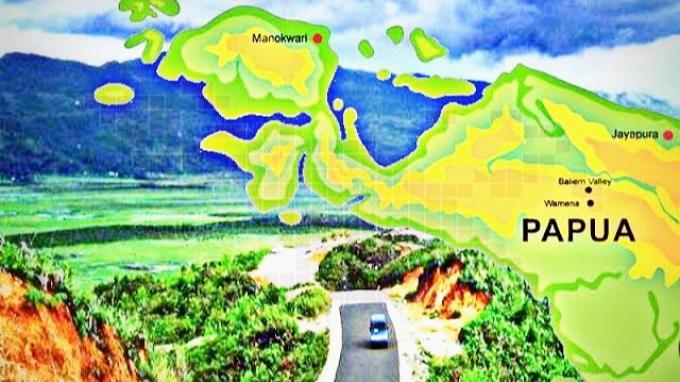Papua DOB Realizes Better Regional Arrangement
Currently there are 6 provinces in Papua due to the addition of DOB (New Autonomous Region). New autonomous regions bring many benefits to the people of Papua. One of them is to organize the area better. Papua will become neater, more organized, and development will also be more even.
Since 2022 Papua has 4 new autonomous regions. The existence of a new province brings many positive changes. One of them is better regional planning. Regional planning is very important so that development in Papua is more evenly distributed.
Of course, the efforts to divide the region in Papua were carried out with the aim of advancing Papua while at the same time making the region more organized. Because after all the addition of new autonomous regions in Papua must provide space for local communities as a regional political commitment.
The Acting Regent of Mimika, Valentinus Sudarjanto Sumito, assessed that the new autonomous regions in Papua cannot be separated from the government’s attention. Including issues in West Papua, related to population distribution which is the main issue, as well as the distribution of underdeveloped villages. There is also a poverty rate that is still above the national average.
With the addition of new autonomous regions, it will solve the problem of poverty in Papua. The addition of provinces will organize all cities and districts in Bumi Cendrawasih. With arrangement and development, Papua will be even more advanced. Development is not only carried out in Mimika, Jayapura, but also in remote villages.
Infrastructure development in the form of roads and electrical installations is very important for the progress of the Papuan people. They can be more advanced because their mobility is facilitated and their lives are getting better because they can enjoy adequate electricity facilities. The people are grateful because thanks to the addition of new autonomous regions, their regions are more modern and organized.
If there is development throughout Papua, both in the mountains and in the coastal areas, then there will be no inequality of progress. There is no such thing as a village left behind because the people are already enjoying the facilities and infrastructure that were built after a new province was established in their area.
Valentinus continued, there is also a local political configuration that is currently continuing, so that polarization between mountain communities and coastal communities is very visible. Hence, regional expansion in Papua must provide space for local communities.
The addition of the new autonomous regions also manages social problems in Papua. The provincial government is trying hard so that there is unity among the people, whether they live on the coast or in the mountains. They were brought together because they are both Papuans and peace continues to be made so they can be united. Don’t let the polarization of society lead to divisions because they are the people of Papua, who should have a high sense of nationalism.
With the new autonomous regions, local communities are indeed given space and privileged. The reason is because one of the goals of the new autonomous region is to advance the people of Papua so that they are given the facilities to be even more advanced.
Meanwhile, the Head of the Regional Development Planning Agency (Bappeda) for Papua Province, Yohanis Walilo, in Jayapura said that the expansion efforts had also received attention from the World Bank, which expressed its readiness to facilitate the preparation of the Regional Spatial Plan (RTRW) for DOB resulting from the expansion of the parent province of Papua.
The World Bank plans to help facilitate the preparation of the RTRW in the new autonomous regions and main provinces. Of course this must be welcomed, so that it can be realized as soon as possible because it will further advance the people. With the addition of the new autonomous regions, in fact, it will have many positive impacts on all Papuans.
According to Yohanis, actually the preparation of the RTRW as the main province should have been completed. It’s just that, due to the formation of the new autonomous regions, data collection must be carried out again. The RTRW has been prepared, but there is division and based on the results of several previous meetings.
Yohanis also added that RTRW is part of the general and derivative plan and refers to higher regulations, namely development plans at national, provincial and district/city levels. RTRW is the basis for formulating space utilization policies, both in provincial and district/city areas.
The central government has high hopes regarding the formation of 4 new autonomous regions in Papua. The hope is mainly so that people can be more prosperous and live in prosperity. Over time, the community will feel prosperous through the impact of the 4 new autonomous regions in Papua.
The addition of new autonomous regions in Papua is in accordance with the regulations. When there are 4 new autonomous regions, the goal is positive, namely the welfare of all Papuan people. No one should reject the new province, because the 4 new autonomous regions were formed to improve the community’s economy, as well as to facilitate control by the provincial government.
The addition of new autonomous regions has been carried out through consultation with indigenous Papuans (OAP) and the Papuan People’s Council. They were given the authority to participate in developing this region. The main aim of adding provinces is to improve the welfare of Papua.
DOB creates better regional planning so that Papua will be more advanced and orderly. In making this happen, there is help from outside parties and it is very good because there are additional sources of funding. Apart from that, there are also arrangements in the social sector so that there is no polarization of Papuan society.
